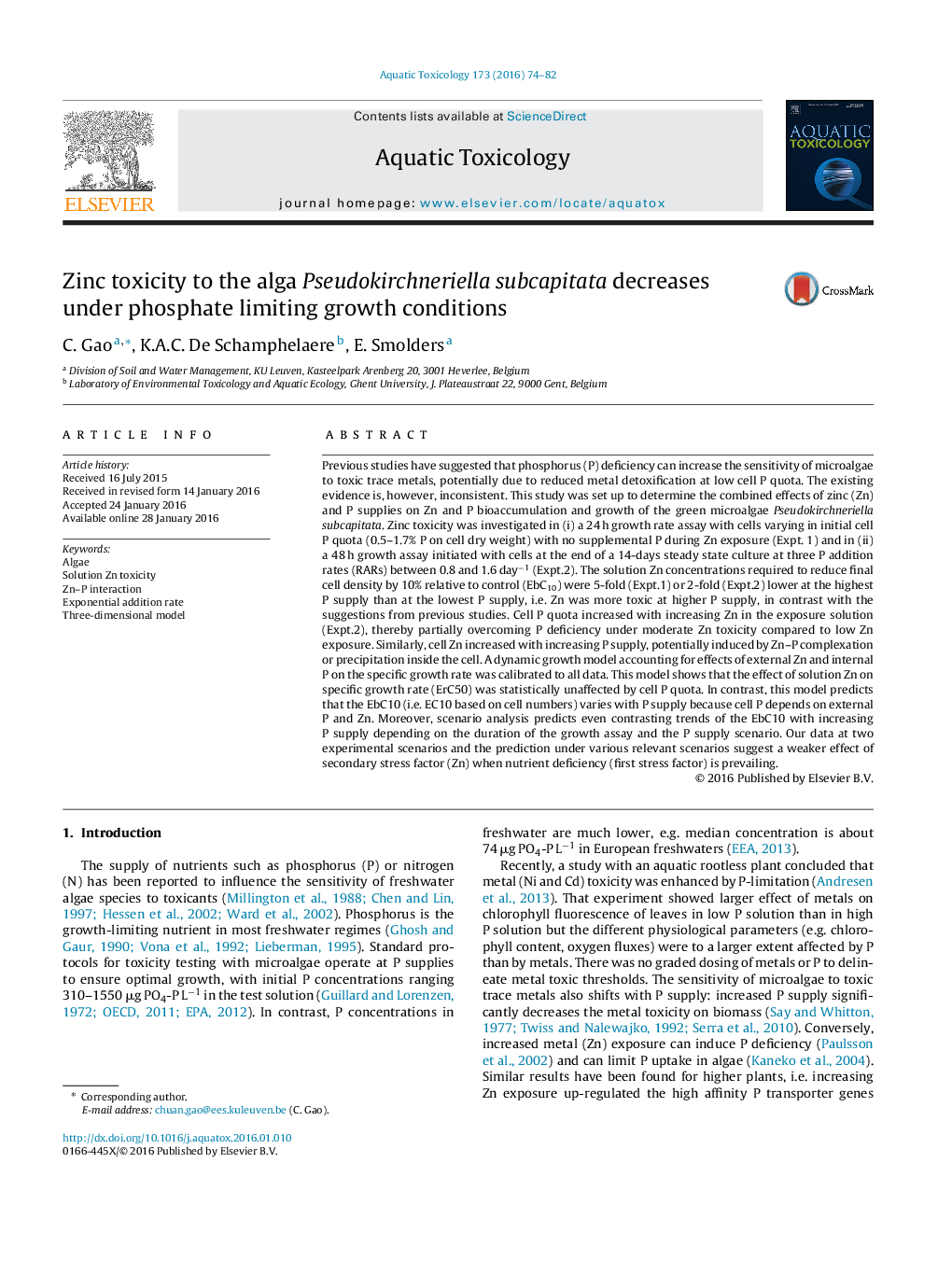| کد مقاله | کد نشریه | سال انتشار | مقاله انگلیسی | نسخه تمام متن |
|---|---|---|---|---|
| 4528868 | 1625932 | 2016 | 9 صفحه PDF | دانلود رایگان |

• Zinc toxicity to microalgae decreases under increased phosphorus starvation.
• A growth model was derived, considering the impact of cell P quota.
• Zinc exposure increases algal cell P, probably due to Zn–phosphate precipitation.
Previous studies have suggested that phosphorus (P) deficiency can increase the sensitivity of microalgae to toxic trace metals, potentially due to reduced metal detoxification at low cell P quota. The existing evidence is, however, inconsistent. This study was set up to determine the combined effects of zinc (Zn) and P supplies on Zn and P bioaccumulation and growth of the green microalgae Pseudokirchneriella subcapitata. Zinc toxicity was investigated in (i) a 24 h growth rate assay with cells varying in initial cell P quota (0.5–1.7% P on cell dry weight) with no supplemental P during Zn exposure (Expt. 1) and in (ii) a 48 h growth assay initiated with cells at the end of a 14-days steady state culture at three P addition rates (RARs) between 0.8 and 1.6 day−1 (Expt.2). The solution Zn concentrations required to reduce final cell density by 10% relative to control (EbC10) were 5-fold (Expt.1) or 2-fold (Expt.2) lower at the highest P supply than at the lowest P supply, i.e. Zn was more toxic at higher P supply, in contrast with the suggestions from previous studies. Cell P quota increased with increasing Zn in the exposure solution (Expt.2), thereby partially overcoming P deficiency under moderate Zn toxicity compared to low Zn exposure. Similarly, cell Zn increased with increasing P supply, potentially induced by Zn–P complexation or precipitation inside the cell. A dynamic growth model accounting for effects of external Zn and internal P on the specific growth rate was calibrated to all data. This model shows that the effect of solution Zn on specific growth rate (ErC50) was statistically unaffected by cell P quota. In contrast, this model predicts that the EbC10 (i.e. EC10 based on cell numbers) varies with P supply because cell P depends on external P and Zn. Moreover, scenario analysis predicts even contrasting trends of the EbC10 with increasing P supply depending on the duration of the growth assay and the P supply scenario. Our data at two experimental scenarios and the prediction under various relevant scenarios suggest a weaker effect of secondary stress factor (Zn) when nutrient deficiency (first stress factor) is prevailing.
Journal: Aquatic Toxicology - Volume 173, April 2016, Pages 74–82